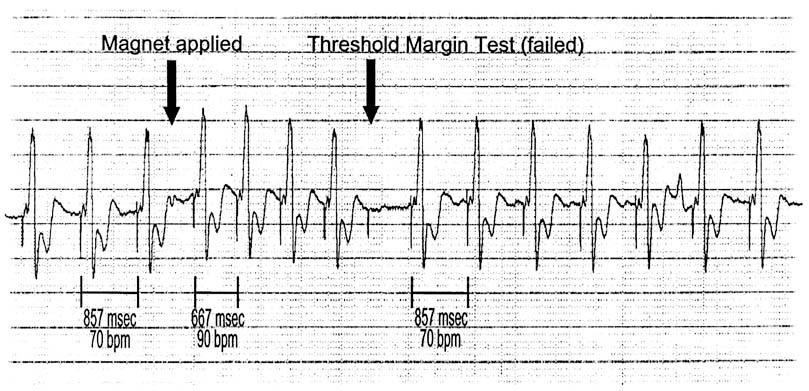 |
 |
Figure 35-3
A threshold margin test (TMT), demonstrating inadequate
safety margin for pacing. Application of a magnet to some pacemakers produces asynchronous
pacing in which one or more pacing stimuli are emitted with a reduced ventricular
pacing voltage, pulse width, or both. This sequence of the TMT is used to determine,
without a formal pacemaker interrogation, the adequacy of the pacing energy settings.
In this electrocardiographic strip from an Intermedics device, the patient was being
paced in the VVI mode (ventricular pacing in the inhibited mode for a single chamber)
at a rate of 70 beats/min, which is equal to 857-msec intervals. On application
of the magnet, this pacemaker produced four intervals (i.e., five pacing stimuli)
of asynchronous pacing at a rate of 90 beats/min (667-msec intervals), demonstrating
adequate battery voltage for this device. At the fifth pacing stimulus after magnet
application, the pacemaker performs a TMT by reducing the stimulus pulse width to
50% of the programmed value (equal to 50% of programmed pacing energy). The failure
of this stimulus to produce a ventricular systole (i.e., failure to capture) demonstrates
a dangerously low safety margin for ventricular pacing, because pacing pulse width
should be at least three and usually four times the threshold for capture. After
five initial stimuli, Intermedics pacemakers then pace asynchronously at the programmed
lower rate (70 beats/min in this case) for 60 additional cycles. On completion of
these 64 cycles (65 stimuli), Intermedics pacemakers return to programmed values
and ignore the magnet.

 |
